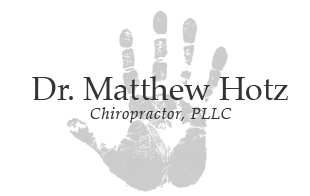What is Causing My Symptoms?
There are a number of causes of back or joint discomfort. The history and exam that we took today are designed to categorize these. We frequently see intersegmental dysfunction (or locked up joints) as the prime diagnosis. As a joint locks, your nervous system perceives this and responds with swelling within the joint and the surrounding ligament, tendon and muscle. This causes muscles to tighten and form muscle trigger points to protect the irritated joint. In some cases, the irritation is significant enough to affect nerves. This segmental dysfunction can be caused by a number of things including injury or accident (sprains/strains), stress, poor work posture, poor sleeping posture or imbalanced exercise.
How Should I Feel After Treatment?
Depending on the cause of your symptoms, there are different responses to adjustment. Since the treatment doesn’t involve taking out failing parts and putting in new ones, we can simply clear the way for the body to heal and/or balance itself. Sometimes, adjusting the joint brings instant relief of pain, particularly if joint lock was recent and the only cause of irritation. In other cases, there is some reactive swelling after treatment and things feel a bit sore or achy near the adjustment area. Research shows this only happens about 33% of the time, and it typically clears up within a day or two. If this happens, it can be good news as it is an indicator that we are working in the right area.
Why Should I Use Ice First?
Most conditions that I treat involve some level of joint inflammation that then sets off muscle tension. I have found it effective to use ice first for 20 minutes out of each hour. The ice reduces the inflammation which may be causing the muscle tension. Heat, although it feels good, brings increased circulation to both a tight muscle and the swollen irritated joint below it and can aggravate your condition. If ice doesn’t help dramatically, then, in some cases, it is okay to try heat.
What is Electro-stim. and Ultrasound?
Electro-stim. is one of the therapies I use to decrease overall pain. It stimulates nerves that send the electrical tingle message and essentially distracts them from sending pain messages. This allows adjusting to go more smoothly. Ultrasound, which uses high frequency sound waves, is a tool to reduce inflammation such as tendonitis and bursitis.
Do I Need an X-Ray?
The national chiropractic quality assurance standard suggests that X-Rays should be used only in cases where the history makes it likely that there is fracture or tumor present. It also recommends that if symptoms do not improve, after two to three visits, then an X-Ray can help discover any hidden reasons. We can refer you to your PCP or to an imaging center if X-ray is required.
What if My Condition is More Serious?
The largest part of my chiropractic training, which includes 5 years of post graduate work, is designed to help a chiropractor diagnose which conditions he can treat effectively and which need to be referred elsewhere. Our training is thorough enough that in many parts of the country, the chiropractor is used as a primary care physician. If at any point during your treatment, things do not appear to be improving in the way we feel they should, I can refer you, not just to your primary care doctor, but to the right specialist for your diagnosis.
What is My Treatment Plan?
Rather than following standardized treatment plans, I have found it more effective to let the patient’s specific symptoms guide us. Initially, for acute care, we want to see you as much as two times in a week to get you out of pain as quickly as possible. After that, we schedule based on when any symptoms return. For some patients, this will mean they are symptom free in two visits. For others, it may take longer, but we will work with you until you feel you are fully recovered. Many patients may choose to follow up four times per year to help stay feeling well.
Should I Get a Massage?
Massage is a fantastic treatment tool in many cases which helps prepare the body for an adjustment and helps confirm the diagnosis. However, we prefer to wait until after your second visit in order to better gauge how much your condition was changed by the first adjustment.
Are There Any Complications From Chiropractic?
During your initial history and exam, several tests were performed to indicate that you are, in fact, a candidate for chiropractic adjustment. If these test demonstrate any contra-indication to adjusting, you would have been informed and referred to another specialist for further workup. Chiropractic has been proven to be a safe and effective treatment.
When Should I Call the Office?
Anytime you have a question about your treatment, whether a symptom is typical for you, or even to schedule an appointment, feel free to call either office as both phone lines are private and checked frequently. If your call is urgent over a weekend, please call our Lee office, and we will try to return your call if possible.
What is The Age Limit?
There is none. Everyone from newborn babies to experienced adults can benefit from chiropractic. The treatment is tailored to meet individual needs and special requirements.
Is There an Alternative Way to Adjust?
Some people actually adore the “popping” sound that is made with a manual adjustment. To them it sounds like relief is on its way. Others find that same noise bothersome. If that is the case for you, just let me know. I can use an activator (an adjustment tool) or a drop piece which will still move the joint but does it without the spine making any noise.

